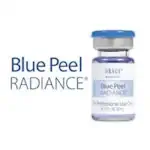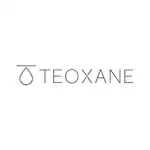Unsure whether to choose Botox or dermal fillers? This comprehensive guide outlines the key differences between these two popular treatments to help you make an informed decision.
The battle against ageing can seem daunting, but with the help of cosmetic treatments like Botox and dermal fillers, it's possible to reduce the signs of ageing and regain confidence in your appearance. Although both options are popular, they function differently and cater to distinct aesthetic concerns. This article offers an in-depth comparison of Botox and dermal fillers, guiding you through their differences and helping you select the ideal treatment for your needs.
Botox vs Dermal Fillers: A Brief Overview
Botox and dermal fillers are both non-surgical cosmetic procedures designed to combat the signs of ageing. Botox is a neurotoxin injected into facial muscles to temporarily paralyse them, diminishing the appearance of wrinkles and fine lines. In contrast, dermal fillers are injectable substances used to add volume to the face, fill in wrinkles and lines, and restore a youthful appearance.
The Mechanisms of Botox and Dermal Fillers
Botox operates by temporarily blocking nerve signals to the facial muscles, causing them to relax and reducing the appearance of wrinkles and fine lines. The effects of Botox generally last between three to six months, after which the treatment needs to be repeated.
Conversely, dermal fillers work by adding volume to the face and filling in wrinkles and lines. There are various types of dermal fillers, including hyaluronic acid fillers, calcium hydroxylapatite fillers, and poly-L-lactic acid fillers. Each filler type has a distinct texture and consistency, making them suitable for different facial areas and concerns.
Key Differences Between Botox and Dermal Fillers
While both treatments aim to reduce the signs of ageing, there are several essential differences between Botox and dermal fillers:
- Botox relaxes muscles and decreases the appearance of wrinkles and fine lines, while dermal fillers add volume to the face and fill in wrinkles and lines.
- The effects of Botox typically last for three to six months, whereas dermal fillers can last up to two years.
- Botox is generally used on the upper face, while dermal fillers are applied to the lower face.
- Botox is a neurotoxin, while dermal fillers consist of various types of injectable substances.
Advantages of Botox
Botox offers several benefits, including:
- Reducing the appearance of wrinkles and fine lines.
- Preventing the formation of new wrinkles by temporarily paralysing the muscles.
- Offering a quick and relatively painless procedure.
- Requiring no downtime after the treatment.
Advantages of Dermal Fillers
Dermal fillers provide several benefits, such as:
- Adding volume to the face and filling in wrinkles and lines.
- Enhancing facial features like the lips or cheeks.
- Providing long-lasting results, with effects lasting up to two years.
- Requiring no downtime after the treatment.
Potential Side Effects of Botox and Dermal Fillers
Like any medical treatment, both Botox and dermal fillers come with potential side effects. The most common side effects of Botox include:
- Bruising and swelling at the injection site.
- Headache.
The most common side effects of dermal fillers include
- Bruising, swelling, and redness at the injection site.
- Itching or rash.
- Asymmetry or overcorrection.
It's important to note that these side effects are generally mild and temporary and can be minimised by choosing a qualified and experienced provider.
Choosing the Right Treatment for You
Deciding between Botox and dermal fillers depends on your specific concerns and goals. If you want to reduce the appearance of wrinkles and fine lines on the upper face, such as frown lines or crow's feet, Botox may be the better option. However, if you want to add volume to the cheeks or lips, or fill in deep wrinkles and lines on the lower face, dermal fillers might be more suitable.
To determine the best treatment for your needs, it's crucial to schedule a consultation with a qualified provider. They can help you discuss your concerns and goals and guide you in choosing the most appropriate treatment.
Frequently Asked Questions
Here are some frequently asked questions about Botox and dermal fillers:
Q: Are Botox and dermal fillers safe?
A: Both Botox and dermal fillers are considered safe when administered by a qualified and experienced provider.
Q: Is there any downtime required after Botox or dermal filler treatment?
A: Typically, there is no downtime required after either treatment. You can resume your normal activities immediately after the procedure.
Q: How long does the treatment take?
A: Treatment time varies depending on the number of areas being treated but usually takes less than an hour.
Q: Are Botox and dermal fillers painful?
A: Both treatments involve a series of injections, which can cause some discomfort. However, most providers use numbing cream or ice to minimise any pain or discomfort during the procedure.
Conclusion
Botox and dermal fillers are both effective treatments for reducing the signs of ageing, but they work in different ways and are designed to address different concerns. Understanding the key differences between Botox and dermal fillers is essential when deciding which treatment is right for you. Be sure to schedule a consultation with a qualified provider to discuss your concerns and goals, and determine the most suitable treatment for your needs.
















